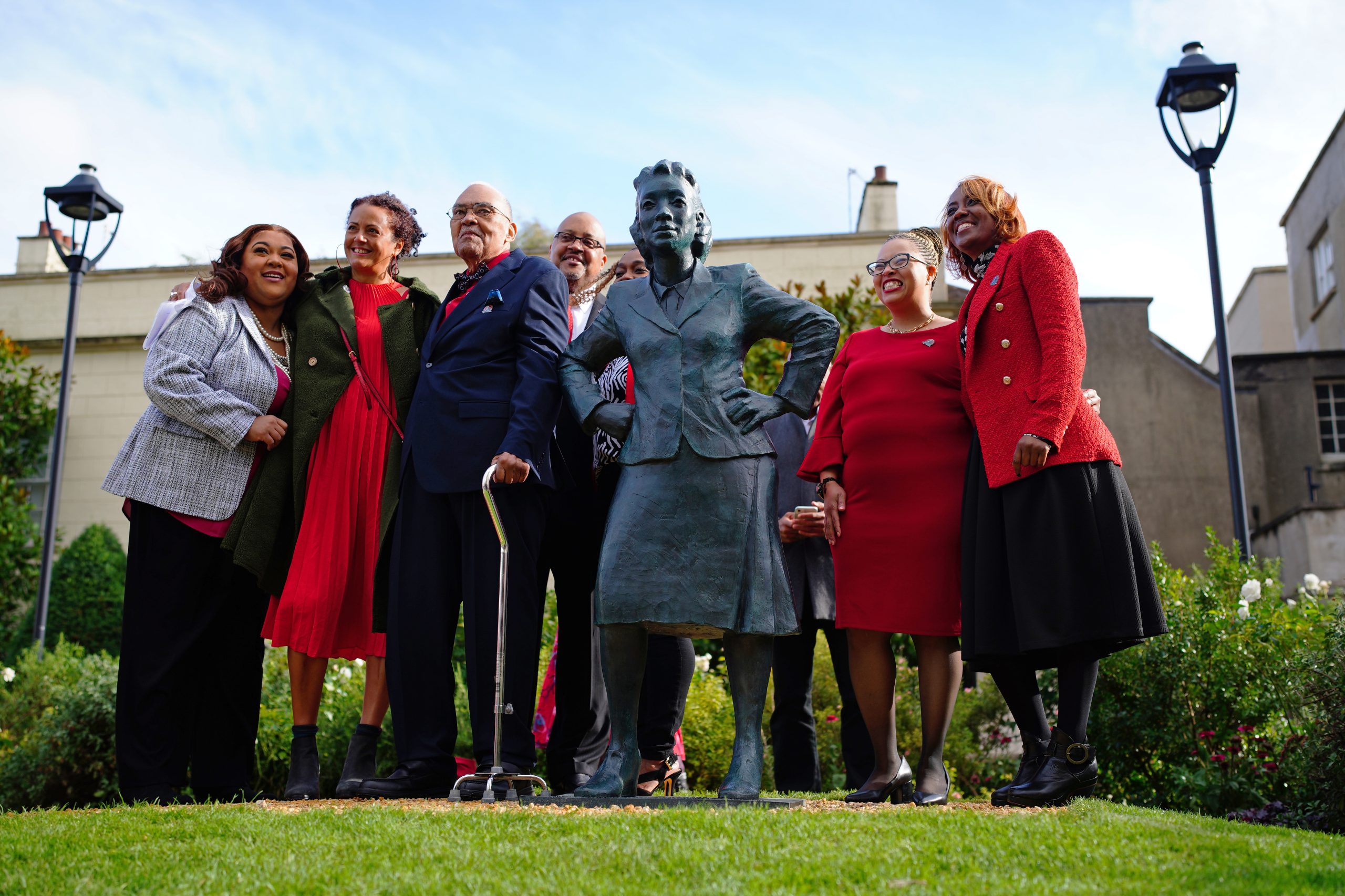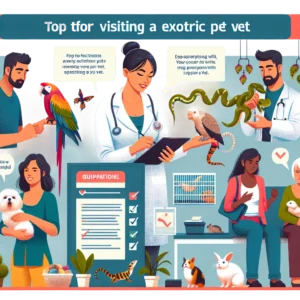Health Literacy Project Trains ‘Promotores’ to Build Trust in San Antonio Communities
The Health Literacy Project in San Antonio is training “promotores” to build trust in communities, improving health literacy. San Antonio’s Health Literacy Project is addressing the issue of health disparities by training “promotores,” community health workers, to build trust and improve health literacy among various communities.
By equipping these promotores with the necessary skills and knowledge, the project aims to empower individuals to make informed decisions about their health and well-being. With a focus on fostering trust and relationships, the project fosters an environment that encourages open dialogue about health concerns and promotes preventive care practices.
Through this initiative, San Antonio is taking a proactive approach to bridge the gap between healthcare professionals and underserved populations, ultimately leading to better overall health outcomes in these communities.
Understanding The Impact Of Limited Health Literacy On Communities
Limited health literacy has a profound impact on communities, which is why the Health Literacy Project in San Antonio has trained ‘promotores’ to build trust and effectively communicate with residents.
Health literacy plays a crucial role in the overall well-being and healthcare outcomes of individuals and communities. Limited health literacy refers to the inability of individuals to access, understand, and use health information effectively. This lack of understanding can lead to a range of health disparities within communities.
In this section, we will explore the correlation between limited health literacy and health disparities and examine the challenges faced by communities with limited health literacy.
The Correlation Between Limited Health Literacy And Health Disparities:
- Limited health literacy is linked to an increased risk of chronic conditions and poor health outcomes.
- Individuals with limited health literacy often struggle to navigate the healthcare system, leading to delayed or inadequate care.
- Health disparities, such as unequal access to quality healthcare and poor health outcomes, are more prevalent in communities with limited health literacy.
- Limited health literacy can contribute to misunderstandings regarding medication usage, preventive care, and disease management, resulting in higher healthcare costs.
- Communities with higher rates of limited health literacy often experience higher rates of hospitalization and emergency room visits.
Understanding the impact of limited health literacy on communities is vital in addressing health disparities and improving overall health outcomes. Let’s now explore the challenges faced by communities with limited health literacy.
Exploring The Challenges Faced By Communities With Limited Health Literacy:
- Limited access to health information and resources makes it challenging for individuals to make informed decisions about their health.
- Language barriers can further exacerbate limited health literacy, especially in diverse communities where English may not be the primary language spoken.
- Complex medical terminology and jargon used in healthcare settings can overwhelm individuals with limited health literacy, making it difficult for them to understand their diagnoses and treatment plans.
- Limited health literacy can lead to reliance on anecdotal information, myths, and incorrect sources, resulting in misinformation and potentially harmful health practices.
- Inadequate health education and limited awareness of available services contribute to the cycle of limited health literacy within communities.
- The stigma associated with seeking help and discussing health issues can hinder individuals from seeking appropriate care, exacerbating health disparities.
Addressing limited health literacy requires tailored interventions and community-based initiatives to promote health education, improve access to resources, and enhance communication between healthcare providers and individuals. By empowering individuals with the knowledge and skills to navigate the healthcare system effectively, we can foster trust, improve health outcomes, and reduce health disparities in San Antonio communities.
Introducing The Health Literacy Project
Introducing the Health Literacy Project’s initiative to train ‘promotores’ in San Antonio to establish trust within the community and enhance health literacy. Empowering local leaders to bridge communication gaps and promote healthier futures.
The Health Literacy Project in San Antonio aims to address the disparities in healthcare access and outcomes within local communities. By training ‘promotores,’ trusted community members, the project seeks to improve health literacy and build trust among residents. Let’s take a closer look at the overview, aims, and objectives of this impactful initiative.
Overview Of The Health Literacy Project In San Antonio:
- The Health Literacy Project is an initiative designed to address discrepancies in healthcare access and knowledge.
- It focuses on training ‘promotores,’ individuals who understand the needs and values of their communities and can disseminate vital health information effectively.
- The project aims to improve health literacy, enhance healthcare outcomes, and foster trust within the community.
- Through targeted training and support, ‘promotores’ develop the skills necessary to educate and empower community members, fostering healthier behaviors.
Aims And Objectives Of The Health Literacy Project:
- Raise awareness: By providing comprehensive health information, the project aims to increase awareness and knowledge among community members, empowering them to make informed decisions about their health.
- Improve health literacy: The project seeks to enhance individuals’ healthcare understanding by training ‘promotores’ to effectively communicate complex information in a culturally appropriate and accessible manner.
- Promote preventative care: By emphasizing the importance of preventive measures, such as regular health screenings and vaccinations, the project aims to reduce the incidence of preventable diseases within the community.
- Enhance trust in healthcare professionals: Through the use of ‘promotores,’ the project aims to bridge the gap between healthcare providers and community members, fostering trust and improving healthcare-seeking behaviors.
- Foster self-advocacy: The project empowers individuals to become advocates for their health by equipping them with the knowledge and skills to navigate healthcare systems and make informed decisions about their well-being.
By focusing on health literacy, trust-building, and community empowerment, the Health Literacy Project in San Antonio strives to create lasting change in healthcare access and outcomes.
Empowering Community Health Workers As ‘Promotores’
The Health Literacy Project in San Antonio is training ‘promotores’ to empower community health workers and build trust within local communities. These ‘promotores’ play a vital role in improving health literacy and promoting wellness in their neighborhoods.
The use of ‘Promotores’ in promoting health literacy is a crucial aspect of community health projects. These community health workers are trained to provide education, raise awareness, and serve as advocates for improved health outcomes within their communities. By empowering ‘Promotores,’ health literacy initiatives can effectively address the unique needs and challenges faced by individuals and families.
Defining The Role Of ‘Promotores’ In Promoting Health Literacy
- ‘Promotores’ are community health workers who bridge the gap between healthcare providers and underserved populations, promoting health literacy and improving access to healthcare services.
- They act as trusted resources within their communities, utilizing their cultural and linguistic competency to communicate health information effectively.
- ‘Promotores’ play a vital role in helping individuals and families navigate complex healthcare systems, making informed decisions, and adopting healthier behaviors.
Importance Of Cultural Competency In ‘Promotores’
Cultural competency is a fundamental quality in ‘Promotores’ that enables them to effectively connect with the communities they serve. Here’s why it is essential:
- Understanding cultural values and beliefs: ‘Promotores’ gain insights into the cultural values and belief systems of their communities, allowing them to provide health information in a way that aligns with their cultural context.
- Effective communication: Cultural competency enables ‘Promotores’ to communicate health information clearly and respectfully, utilizing culturally appropriate language, idioms, and non-verbal cues.
- Building trust: By demonstrating respect for diverse cultural backgrounds, ‘Promotores’ can build trust with community members, increasing their willingness to engage in health-related discussions and seek support.
Overall, empowering ‘Promotores’ and ensuring their cultural competency is crucial for promoting health literacy within San Antonio communities. By embracing their role as trusted advocates, these community health workers can make a significant impact on improving health outcomes and reducing healthcare disparities.
Tailoring Health Information To Diverse Communities
This health literacy project in San Antonio trains ‘promotores’ to tailor health information and build trust among diverse communities. By addressing specific community needs, this initiative aims to improve health outcomes and bridge gaps in understanding.
Health literacy plays a crucial role in promoting better health outcomes in diverse communities. Tailoring health information to meet the unique needs of different populations is essential for effective communication and building trust. In this section, we will explore some strategies for effective communication with diverse populations and discuss tools and resources that ‘Promotores’ can use to enhance health literacy.
Strategies For Effective Communication With Diverse Populations:
- Utilize culturally sensitive language and materials: Use language that is appropriate and relatable to the target community. Consider cultural norms, beliefs, and values when developing health messages and materials.
- Simplify complex information: Break down complex health concepts into simpler terms that are easier to understand. Use plain language and avoid jargon or technical terms that may confuse or intimidate.
- Utilize visuals and multimedia: Incorporate visuals, such as images, videos, and infographics, to enhance understanding. Visual aids can be particularly beneficial for individuals with low literacy levels or limited English proficiency.
- Use storytelling and real-life examples: Connect health information to real-life experiences and stories that resonate with the community. This approach can make the information more relatable, engaging, and memorable.
- Engage community leaders and influencers: Collaborate with community leaders, influencers, and advocates to disseminate health messages. These individuals can help bridge the trust gap and connect with community members on a personal level.
Tools And Resources For ‘Promotores’ To Enhance Health Literacy:
- Multilingual resources: Access to multilingual resources is vital for reaching populations with limited English proficiency. Provide translated materials or utilize language interpretation services to ensure effective communication.
- Health literacy training: ‘Promotores’ can benefit from health literacy training programs designed to enhance their understanding of health information and communication techniques. This training equips them with the skills necessary to deliver information effectively.
- Health communication materials: Develop culturally appropriate health communication materials, including brochures, posters, and pamphlets that address the specific health concerns and needs of the community.
- Online resources: Leverage online platforms and websites that offer health information in multiple languages. Ensure that the information is accurate, reliable, and up to date.
- Collaborative partnerships: Foster partnerships with healthcare providers, community organizations, and stakeholders to improve health literacy efforts. Collaborative partnerships can help access additional resources, knowledge, and expertise.
Effective communication with diverse populations is key to building trust and promoting health literacy. By implementing these strategies and utilizing the right tools and resources, ‘Promotores’ can effectively tailor health information to meet the unique needs of the communities they serve.
Building Trust And Reducing Health Disparities
A Health Literacy Project in San Antonio trains ‘Promotores’ to build trust and reduce health disparities in the community, aiming to improve health outcomes and empower underserved populations. By addressing health barriers and fostering cultural understanding, this initiative seeks to bridge gaps and promote equitable healthcare access.
The Role Of Trust In Improving Health Outcomes
Building trust is a crucial factor in ensuring positive health outcomes within communities. When individuals trust their healthcare providers and community advocates, they are more likely to engage in preventive care, follow through with treatment plans, and seek help when needed.
Trust also plays a vital role in reducing health disparities, especially in underserved communities. By establishing trust, individuals are more likely to feel comfortable and confident in accessing the healthcare resources and information available to them. This can lead to improved health outcomes and a reduction in disparities between different demographic groups.
Strategies For Building Trust Within San Antonio Communities
Building trust within San Antonio communities requires intentional efforts and strategies that address the unique needs and concerns of the population. Here are some effective strategies:
- Cultivating meaningful relationships: Building trust starts with building relationships. Healthcare providers, community leaders, and promotores can engage with community members on a personal level, taking the time to understand their needs and concerns. This can be achieved through regular interaction, active listening, and open communication.
- Enhancing cultural competency: One of the key elements of building trust is cultural competency. It is crucial to understand and respect the cultural beliefs, values, and practices of the communities being served. By acknowledging and incorporating cultural diversity, healthcare providers and promotores can create a safe and inclusive environment that fosters trust.
- Empowering community members: Trust is built when individuals feel empowered and involved in their own healthcare decisions. Promotores play a vital role in empowering community members by providing them with the necessary health information, resources, and tools to make informed decisions about their health. This can include educating individuals about preventive care, chronic disease management, and available healthcare services.
- Providing reliable and accessible information: Trust can be strengthened by ensuring that the information provided to community members is reliable, accurate, and accessible. Healthcare providers and promotores should use plain language and culturally appropriate materials to effectively communicate health information. Additionally, using multiple channels such as community events, social media, and local media outlets can help reach a broader audience and enhance accessibility.
- Collaborating with community organizations: Partnering with local community organizations and leaders can significantly contribute to building trust. By working together, healthcare providers and promotores can leverage the existing networks and resources within the community to reach more individuals and address their specific needs. This collaboration also shows a commitment to understanding and supporting the community’s overall well-being.
Building trust within San Antonio communities is a critical component of reducing health disparities and achieving positive health outcomes for all residents. By employing strategies that focus on relationships, cultural competency, empowerment, reliable information, and collaboration, the Health Literacy Project can make significant progress in building trust and improving the health of San Antonio communities.

Credit: sanantonioreport.org
Measuring The Success Of The Health Literacy Project
The success of the Health Literacy Project in San Antonio is measured through the training of ‘promotores’ who aim to build trust and promote health awareness within the local communities. Through their efforts, the project strives to improve health literacy and empower individuals to make informed decisions about their well-being.
Health literacy plays a vital role in empowering individuals to make informed decisions about their health and well-being. In San Antonio, a Health Literacy Project has been implemented to train ‘promotores’ or community health workers who focus on building trust within local communities.
While the project aims to improve health outcomes, it is crucial to measure its success and evaluate the impact it has on the communities it serves. This section will explore the evaluation methods and indicators of progress as well as showcase case studies and success stories.
Evaluation Methods And Indicators Of Progress:
- Surveys: Conducting surveys among community members to assess their knowledge and understanding of health topics covered by the project.
- Pre- and post-tests: Administering tests to measure knowledge gained and retained by community members before and after participating in the project.
- Focus groups: Organizing focus group discussions to gather qualitative feedback from participants, assessing the project’s influence on their health behaviors and decision-making.
- Observation: Observing the behavior change of individuals within the community and tracking the utilization of health resources post-project.
- Data analysis: Analyzing relevant data such as the number of individuals reached, participation rates, and improvements in health outcomes to gauge the overall impact of the project.
Case Studies And Success Stories:
- Ms. Martinez: After attending the Health Literacy Project workshops, Ms. Martinez became more confident in managing her diabetes. She learned about nutrition, medication management, and the importance of regular exercise. As a result, she achieved better control over her blood glucose levels and reduced her risk of complications.
- Mr. Nguyen: Due to language barriers, Mr. Nguyen struggled to navigate the healthcare system. Through the Health Literacy Project, he was connected with a ‘promotor’ who provided personalized support and translated important medical information. With improved understanding, Mr. Nguyen became more proactive in managing his chronic condition and accessing necessary healthcare services.
- Rosa’s story: Rosa, a community member diagnosed with hypertension, participated in the Health Literacy Project’s hypertension awareness campaign. After attending educational sessions and receiving lifestyle modification tips, Rosa successfully lowered her blood pressure and adopted healthier habits, such as reducing salt intake and engaging in regular physical activity.
These case studies and success stories demonstrate the positive impact of the Health Literacy Project on the individuals and communities it serves. By utilizing evaluation methods and measuring indicators of progress, the project strives to continually improve health literacy and empower community members to take control of their health.
Future Initiatives And Sustainability
The Health Literacy Project in San Antonio trains ‘Promotores’ to establish trust within local communities, paving the way for future initiatives and sustainability in healthcare.
Expanding The Reach Of The Health Literacy Project:
To ensure the success and effectiveness of the Health Literacy Project in San Antonio communities, future initiatives are being developed to expand its reach. By reaching more individuals and communities, the project can make a larger impact on improving health literacy and building trust.
Here are the strategies being considered:
- Online resources and virtual training: With the increasing reliance on technology, the Health Literacy Project plans to create online resources and virtual training modules. This will allow for greater accessibility and convenience, enabling individuals to access valuable information and training from the comfort of their own homes.
- Targeting underserved populations: One of the key goals of the Health Literacy Project is to reach underserved populations who may face additional barriers to accessing healthcare information. By collaborating with community organizations and stakeholders, the project aims to identify and engage with these populations to address their specific needs.
- Expanding educational materials: The Health Literacy Project will continue to develop and distribute educational materials that are tailored to the unique cultural and linguistic needs of the San Antonio communities. These materials will employ clear and simple language to enhance comprehension and promote health literacy among individuals of diverse backgrounds.
- Establishing partnerships with local clinics and organizations: To maximize the project’s impact, partnerships will be formed with local clinics, healthcare providers, and other community organizations. By working together, these collaborative efforts can amplify the reach of the Health Literacy Project and ensure its long-term sustainability.
Collaborative Efforts To Ensure Long-Term Sustainability Of The Project:
The Health Literacy Project recognizes the importance of collaborative efforts to ensure the long-term sustainability of the project. By fostering partnerships, engaging stakeholders, and implementing sustainable strategies, the project aims to create a lasting impact. Here are the strategies being pursued:
- Engaging and training community leaders: The project invests in training community leaders known as ‘Promotores’ or ‘Community Health Workers’ who play a crucial role in bridging the gap between the community and healthcare systems. By equipping these leaders with the necessary skills and knowledge, they can continue to educate and empower the community long after the project’s completion.
- Securing funding and resources: To sustain the Health Literacy Project, securing funding and resources is crucial. Efforts are being made to reach out to various stakeholders, including government agencies, foundations, and private organizations, to obtain financial support and resources. This will ensure the project’s continuation and enable its further expansion.
- Establishing evaluation and feedback mechanisms: Continuous evaluation and feedback mechanisms are being implemented to assess the project’s impact and identify areas for improvement. By actively seeking input from the community and key stakeholders, the project can adapt and evolve to better meet the needs of the San Antonio communities.
- Advocacy and policy development: The Health Literacy Project aims to advocate for policies and initiatives that promote health literacy on a broader scale. By collaborating with policymakers and advocating for health literacy integration, the project can contribute to systemic changes that benefit the community as a whole.
- Promoting sustainability through knowledge sharing: The Health Literacy Project recognizes the value of knowledge sharing and collaboration with other similar initiatives. By sharing best practices, lessons learned, and success stories, the project can contribute to a collective effort to improve health literacy across different communities and regions.
By expanding the reach of the Health Literacy Project and fostering collaborative efforts, its future initiatives and long-term sustainability can be ensured. Through the implementation of strategic strategies, the project will continue to build trust and improve health literacy in the San Antonio communities, ultimately leading to better health outcomes for all.
Frequently Asked Questions For Health Literacy Project Trains ‘Promotores’ To Build Trust In San Antonio Communities
What Is The Purpose Of The Health Literacy Project In San Antonio?
The Health Literacy Project aims to train ‘Promotores’ to build trust in San Antonio communities, promoting health education and empowering individuals to make informed decisions about their health.
Who Are The ‘Promotores’ In The Health Literacy Project?
The ‘Promotores’ in the Health Literacy Project are community members who receive specialized training to become health educators and trusted sources of information within their communities.
How Does The Health Literacy Project Build Trust In San Antonio Communities?
The Health Literacy Project builds trust by training ‘Promotores’ who understand the cultural and linguistic barriers faced by community members. They facilitate open dialogues, provide accurate information, and offer ongoing support to improve health literacy.
What Role Do ‘Promotores’ Play In Improving Health Literacy?
‘Promotores’ play a crucial role in improving health literacy by serving as liaisons between community members and healthcare providers, educating individuals on health-related topics, and helping them navigate the healthcare system.
Conclusion
Overall, the Health Literacy Project’s training of ‘promotores’ in San Antonio communities is making a significant impact in building trust and promoting health. By focusing on cultural competence and community engagement, these promotores are effectively bridging the gap between healthcare providers and the community.
Through their efforts, they are able to deliver health education and resources in a way that is easy to understand and culturally relevant. This not only empowers individuals to take control of their own health, but also fosters a sense of trust and connection with the healthcare system.
The Health Literacy Project’s approach is a powerful example of how addressing health disparities requires collaboration and understanding. With the continued commitment and support of all stakeholders, this initiative has the potential to create lasting positive change in San Antonio communities.













Post Comment